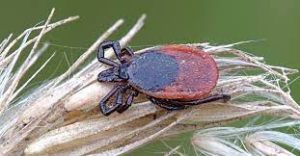In the realm of parasites, ticks (Ixodida) stand as one of the most intriguing and complex creatures. These arachnids have a remarkable ability to adapt to diverse environments and a life cycle that intertwines with various host species. In this article, we dive into 35 captivating facts about ticks, shedding light on their intricate nature and impact on both humans and animals.

1. Small Yet Mighty: Ticks may be tiny, but their impact on ecosystems and health is significant.
2. Varied Species: There are over 900 species of ticks, each with unique characteristics and behaviors.
3. Parasitic Lifestyle: Ticks are obligate blood-feeding parasites, relying on hosts for their sustenance.
4. Complex Mouthparts: Their mouthparts, called chelicerae, are adapted for piercing skin and feeding on blood.
5. Global Distribution: Ticks inhabit almost every corner of the world, from temperate forests to tropical grasslands.
6. Life Cycle: Ticks undergo a four-stage life cycle—egg, larva, nymph, and adult—with each stage requiring a blood meal.
7. Disease Vectors: Ticks are notorious for transmitting diseases such as Lyme disease, Rocky Mountain spotted fever, and more.
8. Host Specificity: Different tick species have specific host preferences, which influence their distribution.
9. Stealthy Feeders: Ticks often go unnoticed while feeding due to their anesthetic saliva and slow, methodical feeding process.
10. Migratory Hitchhikers: Some bird species carry ticks across great distances, contributing to their dispersal.
11. Warmth Seekers: Ticks are more active during warmer months and tend to thrive in humid environments.
12. Disease Reservoirs: Ticks can serve as reservoirs for pathogens, perpetuating disease transmission cycles.
13. Acaricides: Chemical agents called acaricides are used to control tick populations, especially in livestock.
14. Fossil Evidence: Ticks have been around for at least 90 million years, with preserved fossils showing similarities to modern species.
15. Engorgement Process: As ticks feed, they can swell to several times their original size due to blood intake.
16. Silk Secretion: Some tick species use silk to create a protective covering for their eggs.
17. Allergic Reactions: Tick bites can trigger allergic reactions in some individuals, leading to localized itching and swelling.
18. Tick Removal: Proper tick removal involves using fine-tipped tweezers to grasp the tick’s mouthparts and pulling gently.
19. Agricultural Impact: Ticks harm livestock by causing irritation, blood loss, and transmitting diseases.
20. Slow Reproduction: Tick reproduction is slow, with some species laying only a few thousand eggs in their lifetime.
21. Transovarial Transmission: In some cases, pathogens can be transmitted from a tick parent to its offspring.
22. Human Health: Ticks’ impact on human health goes beyond disease transmission, as their bites can cause discomfort and secondary infections.
23. Covert Behavior: Ticks often remain hidden in tall grasses, waiting for potential hosts to brush against them.
24. Host Recognition: Ticks locate hosts through sensory cues such as body heat, moisture, and vibrations.
25. Removing Ticks Safely: Quick and proper removal of ticks can reduce the risk of disease transmission.
26. Ectoparasite Engineering: Ticks’ ability to manipulate host behavior is fascinating, as they can influence hosts to remain still during feeding.
27. Unique Saliva: Ticks’ saliva contains a cocktail of chemicals that aid in feeding, including anticoagulants and immunosuppressants.
28. Wildlife Dynamics: Ticks play a role in regulating wildlife populations by influencing host health and behavior.
29. Evolving Pathogens: Tick-borne diseases are on the rise due to factors like climate change, causing shifts in tick distribution.
30. Ancient Associations: Ticks’ parasitic behavior dates back to the time of dinosaurs, with evidence found in amber fossils.
31. Personal Protection: Wearing long clothing and using insect repellent can reduce the risk of tick bites.
32. Tick Control Strategies: Integrated pest management approaches aim to reduce tick populations while minimizing environmental impact.
33. Ecological Balance: Despite their negative reputation, ticks contribute to ecosystem balance by controlling host populations.
34. Immunity Strategies: Some animals have evolved immune responses that help them tolerate tick infestations.
35. Continuous Study: Ongoing research into tick biology, behavior, and disease transmission is vital for effective prevention and control.



















Add Comment